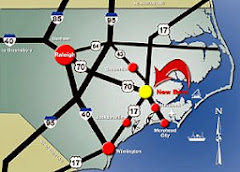PRUDENTIAL VALUE RANGE MARKETING – This home is marketed in the price range $244,900- $284,876 Sellers will entertain offers in the price range.
You will not believe the peace and tranquility you will feel once on this property. As soon as you turn off the street on the scenic driveway covered with crushed shells (marl) you will know you are coming home. 1.9 acre surrounded with woods of immaculately landscaped yard, freshly manicured lawn and mature and established landscaping. 1850 sq. ft. home that has three bedrooms two full baths, high ceilings in the living room as well as this home’s main room, sunroom. Great room / sunroom have oversize windows overlooking back yard and beautiful Italian Marble tile floors. Plenty of light and peaceful setting makes this just a perfect room where you will be spending most of your time. Open floor plan, specious bedrooms and plenty of storage space make this a very inviting home. Oversized two car garage has built in oversized cabinets, workshop and ½ baths. House is on private well (no water bill for you this month) and water tap has been paid. This home has been so well maintained over the years and it is currently under contract with Terminix, seller has already had home inspected by professional home inspector and if that isn’t enough there are offering one year home owner warranty for the buyers.
Home has maintenance free composite siding no painting required. Build in food processor in the kitchen! Water softener Irrigation System, private well …
Your North Carolina Broker Sonja Babic 252-617-0861 www.SonjaBabic.com
Wednesday, July 30, 2008
Welcome to your own “Bird Sanctuary”
Saturday, July 26, 2008
Golf Course Lot in an active boating and golfing community
BEST PRICED GOLF COURSE PROPERTY IN FAIRFIELD HARBOUR
Your North Carolina Broker
Sonja Babic
252-617-0861
www.SonjaBabic.com
Sunday, July 20, 2008
North Carolina Symbols Part VIII
Your North Carolina Broker
Sonja Babic
252-617-0861
North Carolina Symbols Part VII
State Motto, Esse Quam Videri - Esse Quam Videri (To be rather than to seem) The General Assembly of 1893 adopted the words "Esse Quam Videri" as the State's motto and directed that these words with the date "20 May, 1775," be placed with our Coat of Arms upon the Great Seal of the State
The motto is a literal translation of a phrase from a sentence in Cicero's "On Friendship" (De Amicitia, chapter 26). The complete sentence in Latin is:
Virtute enim ipsa non tam multi praediti esse quam videri volunt (Fewer possess virtue, than those who wish us to believe that they possess it).
Until the act of 1893, North Carolina had no motto, being one of the few states--and the only one of the original thirteen--without one.
What a great motto that can and should be applied to all the aspects of our lives, today as much as ever!
Saturday, July 19, 2008
North Carolina Symbols Part VI
Students at a Wilson County school petitioned the North Carolina General Assembly for the establishment of the sweet potato (Ipomoea batatas) as the Official State Vegetable. Their assignment led to the creation of this state symbol. The sweet potato is high in vitamins A and C and low in fat and was grown in North Carolina before the European colonization of North America.
According to the National Agricultural Statistics Service, North Carolina is the largest producer of sweet potatoes in the nation, harvesting more than 700 million pounds of the vegetable in 2006, and thus providing more than 40% of the 1.6 billion pounds produced in the United States.
Friday, July 18, 2008
North Carolina Symbols Part V

According to North Carolina Forests, 2002 (published by the US Department of Agriculture Forest Service), softwood species (like pine, hemlock, and spruce) made up 34% of the state's total wood volume, with the loblolly pine being the predominant species.

Your North Carolina Broker
Thursday, July 17, 2008
North Carolina Symbols Part IV

Did you know that: The honey bee has been proclaimed the official state insect in 16 states?

Your North Carolina Broker Sonja Babic 252-617-0861 www.SonjaBabic.com
Wednesday, July 16, 2008
North Carolina Symbols Part III
The fruit consists of four parts: the outer skin or hull; the pulp, or 'meat'; seeds; and juice.
Several small green seeds are found in each grape. The skin is very thick and tart. The pulp is viscous and sweet. The seeds, which are bitter, can be swallowed with the pulp or extracted and spit out. The most desired part of the scuppernong is the sweet juice that lies underneath its skin.
In addition, according to herbal lore, eating this whole grape also has health benefits. The hull adds a significant amount of fiber to the diet; while the seeds when chewed provide a grape-seed extract that can aid in improving memory and other functions. While no scientific validation of this fact is availalble, it still makes for another good excuse to enjoy this truly Southern delicacy.
Your North Carolina Broker
Monday, July 14, 2008
North Carolina Symbols Part II
 State Flower, Dogwood - The General Assembly of 1941 designated the dogwood as the State Flower. The Dogwood is one of the most prevalent trees in North Carolina and it can be found in all parts of the state from the mountains to the coast. It blossoms in spring and continues in to the summer most often white and sometimes in pink or red.
State Flower, Dogwood - The General Assembly of 1941 designated the dogwood as the State Flower. The Dogwood is one of the most prevalent trees in North Carolina and it can be found in all parts of the state from the mountains to the coast. It blossoms in spring and continues in to the summer most often white and sometimes in pink or red.
The flowering dogwood (Cornus florida) originally evolved as a junior member of the forests of the eastern United States where it thrives under the canopy of larger trees in the shady, moist and nutrient-rich conditions it prefers. Home-owners and landscapers have long favored it for its lovely spring display, its attractive shape and luxuriant leaves and its modest size.
This versatile little tree requires a little thought and care if its introduction to a property is to be a success. It is not ideal for all sites and climate conditions and it is vulnerable to a range of diseases and insect predators. The flowering dogwood is also easily damaged by lawnmowers and doesn't respond well to rough handling.
Sunday, July 13, 2008
North Carolina Symbols Part I

The Northern Cardinal is a mid-sized songbird with a body length of 21-23 cm (8.3 to 9 inches) and a wingspan of 25-31 cm (10-12 in). It weighs about 45 g (1.6 ounces). The male is slightly larger than the female. Male Cardinal is red all over except his throat and area around his bill witch is black. The female is dull in color with some red mostly to the crest, wings and tail. Difference in color is very common with birds as female are the ones sitting on the eggs and they have to blend with the natural setting in order to protect their eggs. The Northern Cardinal is a territorial song bird. The male sings in a loud, clear whistle from the top of a tree or another high location to defend his territory. He will chase off other males entering his territory. The Northern Cardinal learns its songs, and as a result the songs vary regionally. It is able to easily distinguish the sex of another singing Northern Cardinal by its song alone. Mated pairs often travel together. The
 cardinals are fine singers, and witch is quite unusually in bird world females cardinals are singing just as fine as males. Both sexes sing a clear, whistled song patterns, which are repeated several times, then varied. Some common phrases are described as purdy, purdy, purdy...whoit, whoit, whoit, whoit and what-cheer, what-cheer... wheet, wheet, wheet, wheet'.
cardinals are fine singers, and witch is quite unusually in bird world females cardinals are singing just as fine as males. Both sexes sing a clear, whistled song patterns, which are repeated several times, then varied. Some common phrases are described as purdy, purdy, purdy...whoit, whoit, whoit, whoit and what-cheer, what-cheer... wheet, wheet, wheet, wheet'.There are nesting on small trees and shrubs not higher then 4 feet and they feed mostly by seeds. Northern Cardinals also will consume insects and feed their young almost exclusively on insects.
Click Here to see singing Cardinal on YouTUBE










